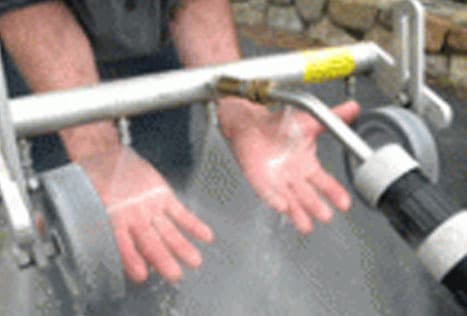TIPS & LINKS
Roof Damage • Bacterias & Infections • Chemicals Used • Chemical Mixing • Tools & Materials
TYPES OF ROOF DAMAGE
Pressure Washing
Pressure Washing is dangerous for cleaning roofs. Though pressures less than 800 psi at the pump head can be acceptable for rinsing away dead algae, using any gas operated pump on a roof is a professionals job. Pressure washing should never be used for direct cleaning of a shingle roof’s surface. In fact, at the nozzle of the spray gun the water pressure should not exceed 150 psi.
Why Shingles Breakdown
Shingles break down from decomposition caused by algae and fungal filament root systems. It can cause shingles to have cracks in them, curl and swell. Shingles break down because algae and fungus have a hunger for limestone fillers. Limestone, which contains phosphates, is an excellent source of nutrients for algae and fungus. Shingles break down from the waste created by the algae and fungus metabolizing the limestone fillers. This waste is acidic and damages the
Damages asphalt protected layers
Poured driveways and other flat concrete is tapped to send floating stone aggregate to the bottom of the slab. This way the rocks are not visible at the surface. Then the concrete finisher adds a broom stroke to the concrete for non-skid and decoration.
When these areas are frequently pressure washed the broom stroke erodes away along with layers of the concrete. The stones that were tapped down deeper into the concrete become exposed. Professionals using SoftWash equipment have been trained to use chemicals to make the job easier and reduce high pressure erosion.

Roof Maintenance
There are many types of shingle roofs. More than types, there are styles and colors. From the most basic shingle pattern to the highest end products, all are made of similar materials. There are three tab shingles as well as architectural shingles. There are 20, 30 and 50 year ratings. Colors designed to reflect light and heat and colors that blend into the buildings overall color scheme. No matter what type rating and color roof is on a building, roofs are expensive and require maintenance like any other building surface.
Granular Loss
Granular loss can be explained in several different ways. The loss of aggregate from composition shingle roofs is not uncommon. It is actually a part of the life cycle of the shingle itself. To understand granular loss you must understand why the granules are there themselves. The layers of a shingle are simple. Layer
Damage from Weather
Weathering is one of the most common ways aggregate is removed from a shingle roof. Hail storms, hard rain, wind and damaging UV rays from the sun can wear away at a roof little by little. Some of the aggregate on your roof is actually “sacrificial” for that reason. The manufacturer of the roofing materials will add 30 to 40% more aggregate to the roofing surface to account for initial loss in the first three years as well as weathering.
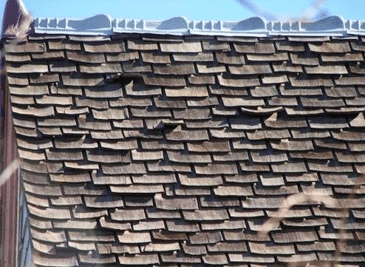
ROOF BACTERIAS & INFECTIONS
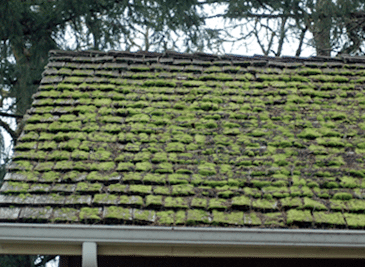
Microbials
Your roof, home and surroundings need to be safeguarded against the possible health issues that can come from mildew, algae, fungus and bacteria. Starting from your roof, many areas can be effected by these microbials. Every time it rains, every morning dew, the fungus on your roof drips down spores onto sidewalks, driveways, decks, walls and more. These spores then attach and grow new colonies. These colonies are then transported into your home by foot traffic, pets and by air itself.

Sick Building Syndrome
Another condition where algae and molds are problematic. HVAC systems suck in air from their intakes on top of roofs on commercial buildings. It is very common for even hospitals to have these intakes on top of roofs that have flat roof decks that are infested with algae, mold, mildew and bacteria.
These microbials blast seeds or spores into the air that are collected by these intakes and distributed throughout the building. Then any moist warm area will begin to produce colonies.

Legionnaires’ Disease
Caused by an airborne bacteria called Gram negative, aerobic bacteria belonging to the genus Legionella. Legionnaires’ disease though not directly attributed to roof and exterior stains can be found in HVAC systems, water fountains, ice machines and other areas that hold moisture and cultivate mold and fungal growth. Legionnaires’ disease is a prime example of how illness can be created from environments that harbor mold, mildew, algae and bacteria.
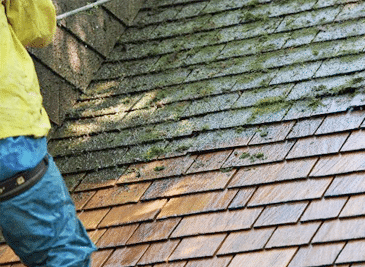
Algae are weeds
Algae are like weeds, actually like tiny plants. They have roots, they have what are like leaves, they even have flowers “blooms”. Algae even can go through photosynthesis like a plant taking in carbon dioxide, creating food and giving off oxygen. So for educational purposes using a weed as an example of how algae is completely removed is good. You must use a chemical that will kill the entire plant.
Algae, mold, mildew, bacteria, etc. are well known culprits when it comes to allergies. In fact,
 JOMAX CLEANER: THE PERFECT SOLUTION FOR DIRT AND MILDEW
JOMAX CLEANER: THE PERFECT SOLUTION FOR DIRT AND MILDEW
Restore curb appeal—and eliminate mold & mildew—with Zinsser® JOMAX® House Cleaner and Mildew Killer. This powerful formula removes tough dirt and stains. Just mix with bleach and water, apply, wait five minutes and rinse. Great for spring cleaning or painting prep. Kills mold & mildew fast! Cleans off dirt and stains. Easy to use – No scrubbing necessary! Economical – one gallon makes 20 gallons of cleaning solution. Can be used near plants or shrubs.
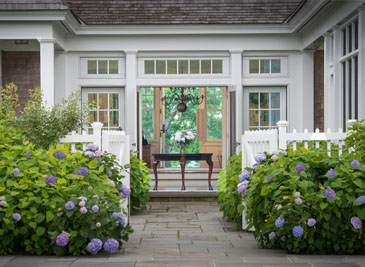
Pre-painted mildew remover uniquely formulated to kill mold and mildew fast and remove dirt and stains on most exterior painted or non-porous surfaces; without the need for scrubbing.
Recommended for cleaning vinyl and aluminum siding and trim; painted or stained wood siding, trim, decks, and fences, and painted or stained stucco, concrete and other painted or non-porous surfaces.

Roof stains caused by fungus or algae can be prevented by applying a stain blocking agent. These stain blocking agents can slow the formation of fungus and algae until the next application, usually once per year. Each time the roofing shingles are washed using a power washer, it removes the granules that make the shingle resistant to the sun and elements.
Kills mold & mildew fast, Removes dirt and stains without scrubbing, easy application with a garden hose or sprayer.
MIXING PRODUCTS FOR ONE BATCH METHOD
Commonly referred to as mixology, the proper process of mixing cleaning solutions is important to set up in your cleaning project. Incorrect mixing of chemicals and even the order of the chemicals being added to the cleaning solution tank can result in injury.
Water, Bleach, and Jomax Solution
For use in cleaning these surfaces, painted surfaces, delicate surfaces, siding both wood or vinyl, screen enclosures, wood fences and decks, soffits, eaves, fascia strip, vinyl fences, and all other lightly stained surfaces. Add Water To The Tank First. (100 gallon tank example).
| Water | Bleach | Jomax | Cleaning Solution |
| 3 1/4 quarts | 2 1/2 cups | 3/4 cups | 1 Gallon |
| 6 1/2 quarts | 4 1/2 cups | 1 1/2 cups | 2 Gallons |
| 4 Gallons | 4 1/2 cups | 1 1/2 cups | 5 Gallons |

EAGLE’S SOFT WASHING SYSTEM
Recently, Cape Cod has been suffering epidemically because of roof stains, and the damage to homes they bring with them. Most of us thought all this ugliness was just an eyesore, and it wasn’t actually shortening the lifespan of our roofs or raising our energy bills. This, however, is simply not the case. These infections do affect your home, and it should be taken care by a skilled professional in the Industry.
Some contractors are always trying to wash the roofs of residential properties or even commercial buildings with Chlorine Based Solution, in fact these products do more harm to the roofs than good!
Strongest In Equipment
Every advancement that has been brought to the roof and exterior softwashing industry has come through AC Lockyer and the companies he owned. He invented softwashing, and pioneered the technology with advancements like the Cradle Skid and Direct Positive Injection Technology.
Gentle on Hands
Our tools and materials are all specifically for each job type. Our tolls are safe for our professionals to use, and operate. Our water jet streams are so gentle that it won’t even hurt your hand, all this to ensure the safety of our professionals and the best results quality for your roof.



